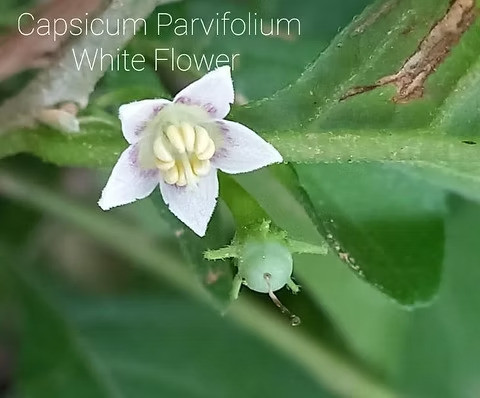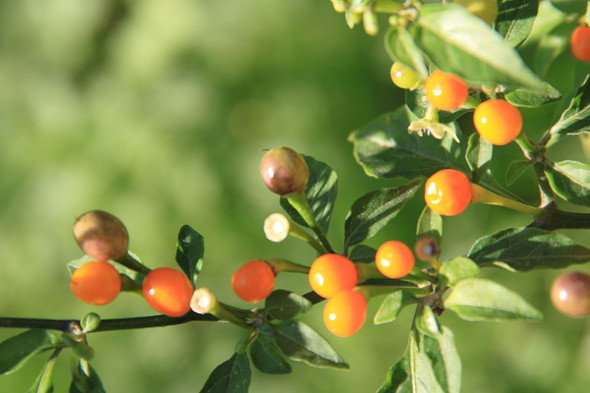Description
Chilli Name: CAPSICUM PARVIFOLIUM
Chilli Species: Parvifolium
Chilli Origin: Brazil
Chilli Heat: Unknown
Capsicum parvifolium is one of the rarest and least understood members of the Capsicum genus. Native to Brazil and parts of South America, this wild species is not commonly cultivated and is mostly known through botanical records, seed banks, and a small number of specialist growers and researchers.
As the name suggests, "parvifolium" means "small-leaved", and that’s exactly what sets this plant apart. It forms a low, bushy plant with delicate, tiny leaves, giving it a subtle, almost ornamental appearance. The flowers are small and generally white, lacking the purple pigmentation found in many other wild species like praetermissum.
The fruit is very small and round, often just a few millimetres across, and ripens from green to red. While full data on its Scoville rating is limited, reports suggest it has a mild to moderate heat, far less intense than other wild relatives. However, the seeds are quite large in proportion to the fruit, which is one reason this species hasn't seen much use in food production.
What makes Capsicum parvifolium especially interesting is its genetic uniqueness. It's part of a very distant branch of the Capsicum family tree and may carry valuable traits for future breeding — such as pest resistance, drought tolerance, or novel flavours — even if it's not suited to direct culinary use.
For the chilli collector or grower interested in the botanical side of Capsicum, parvifolium is a fascinating species to study and preserve. It's not a kitchen staple, but it’s a scientific treasure — a glimpse into the ancient and diverse roots of the chilli world.



